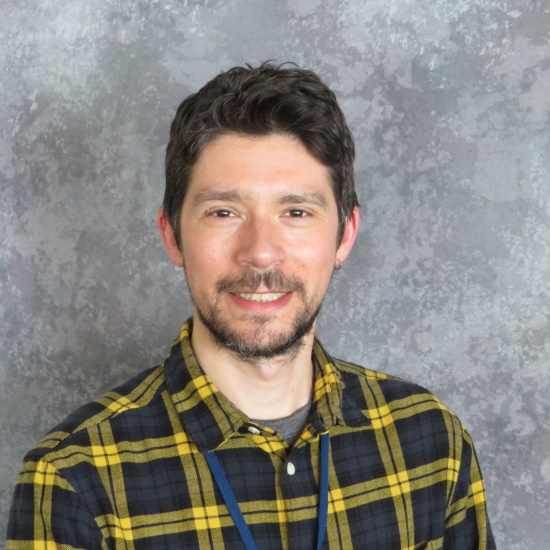Spectroscopy of exoplanets at high resolution
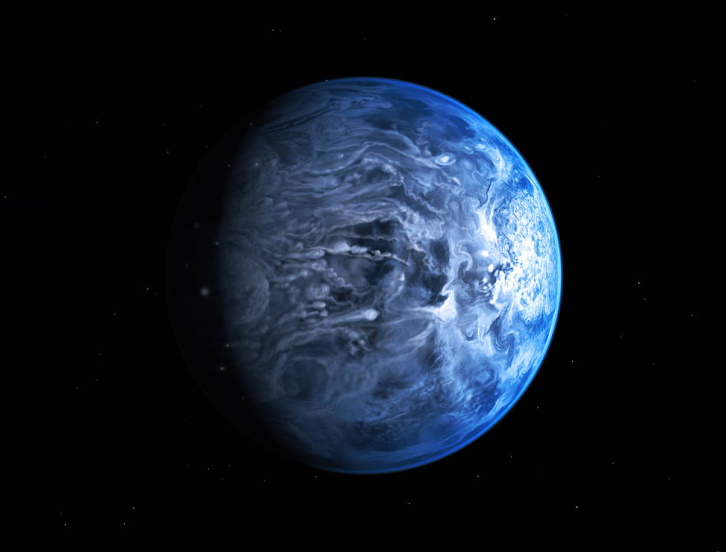
Theo Murphy meeting organised by Professor Sergey Yurchenko, Dr Matteo Brogi and Professor Jonathan Tennyson FRS.
The meeting aimed to bring together exoplanetary astrophysicists working with novel high resolution spectroscopic techniques with providers of the high-resolution spectroscopic data both theoretical and experimental. There is a growing need for these communities to communicate their needs and capabilities. The spectroscopic community needs to learn about the molecules which are thought to be important for HR atmospheric studies. In turn, the astrophysical community (data users) needs to understand the limitations and capabilities of the HR laboratory data, both experimental and theoretical.
The schedule of talks and speaker biographies are available below. Speaker abstracts are also available below.
Attending this event
This meeting has taken place.
Enquiries: contact the Scientific Programmes team
Organisers
Schedule
Chair
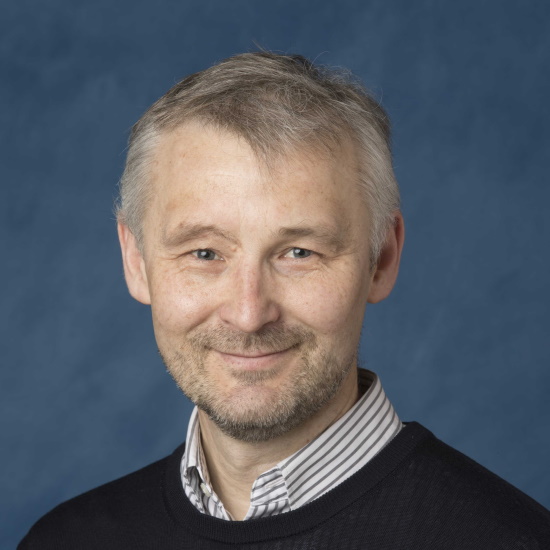
Professor Sergey Yurchenko, UCL, UK

Professor Sergey Yurchenko, UCL, UK
Sergey Yurchenko (born 1968 in Frunze, USSR) studied Physics at Tomsk State University, Russia, where he obtained his PhD in Molecular Spectroscopy in 1998. After holding postdoctoral positions in Germany and Canada, he joined the ExoMol group at University College London in 2011 as tenure, where he became a Professor of Physics at the Physics and Astronomy Department of UCL, working on high-resolution spectroscopic data for molecules important for atmospheres of exoplanets and specialising in the quantum-mechanical method development. Together with Professor Jonathan Tennyson, he runs the ExoMol database. Sergey Yurchenko is a coordinator of the Ariel working group 'Spectroscopic Databases'.
| 09:00-09:05 |
Introduction
|
|---|---|
| 09:05-09:45 |
Flash talk session
|
| 09:45-10:15 |
High resolution spectroscopy for the atmospheres of exoplanets
High resolution spectroscopy (HRS) has proven to be a powerful technique for the characterisation of exoplanet atmospheres that has revolutionised our understanding of their compositions, structures, and dynamics. It does not require the planet to transit its host star, and can be combined with high contrast imaging to reach down to star-planet contrasts at the 10-6-10-7 level. It is our only avenue for the coming decade for the remote exploration of the atmospheres of the very nearest rocky exoplanets. In this talk Professor Birkby will outline the advances made in our understanding of exoplanet atmospheres via HRS. The HRS technique uses template-matching, typically via cross-correlation, to identify the unique chemical fingerprint species in the planet spectrum. The plethora of lines at high spectral resolution (R>20,000) make it difficult to mimic these species by random chance, making their detection robust, and delivering constraints on mixing ratios at the 0.1 dex level, and global wind speeds to 1 km/s, all with ground-based 4-8 m class telescopes. In its current form, HRS inherently relies on high accuracy and precision in the position and relative strength of each line in the theoretical spectrum. She will highlight what happens when this is not the case, and discuss areas where observational studies are driven by advances in laboratory and theoretical calculations of line lists. 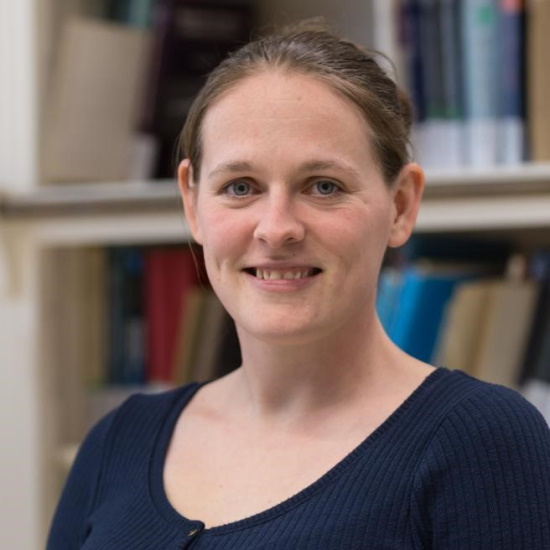
Professor Jayne Birkby, University of Oxford, UK

Professor Jayne Birkby, University of Oxford, UKJayne Birkby is an Associate Professor of Exoplanetary Science at the University of Oxford and a Fellow of Brasenose College. She received her PhD in Astrophysics from the University of Cambridge, and has previously held a postdoctoral scholarship at Leiden University, a NASA Sagan Fellowship at Harvard University and an Assistant Professorship at University of Amsterdam. She is an ERC Starting Grant Laureate, where she is PI of the project 'exoZoo: High definition and time-resolved studies of exoplanet atmospheres'. Her goals are to understand the incredible diversity of the exoplanet population, and to survey the very nearest terrestrial exoplanets with the upcoming Extremely Large Telescopes (ELTs). Professor Birkby and her group specialise in using, and helping to design, the highest resolution instruments for the largest telescopes, and have a keen interest in connecting exoplanets to chemistry, geology, and biology in the pursuit of the answer to: are we alone? |
| 10:15-10:30 |
Discussion
|
| 10:30-11:00 |
Break
|
| 11:00-11:30 |
Spectroscopic studies and libelists for (exo)planetary atmospheres
The spectroscopy of small molecules (5 to 10 atoms) present in planetary atmospheres is paradoxically often both well and insufficiently characterised. On the one hand, many molecules (say water, methane, …) have been deeply studied for many decades. But, on the other hand, the recent needs for planetology have raised new needs: extreme conditions (for instance high temperature giant exoplanets) require the inclusion of a huge number of excited states, while new instrumental measurements require a higher precision. Line broadening parameters are also necessary to account for pressure effects also constitute an important research field. Recently, quantum chemistry calculations have strongly increased their capabilities leading to extensive models over wide spectral ranges with an excellent reliability on line intensities. Nevertheless, line-by-line intensities using effective models still have a role to play in order to provide a very good accuracy whenever line assignments are possible; in particular, this helps to refine ab initio molecular potentials. Professor Boudon presents here some recent results obtained in the Dijon group concerning some molecules with a high symmetry that are of interest for giant (ex)planets and the associated databases they have implemented. 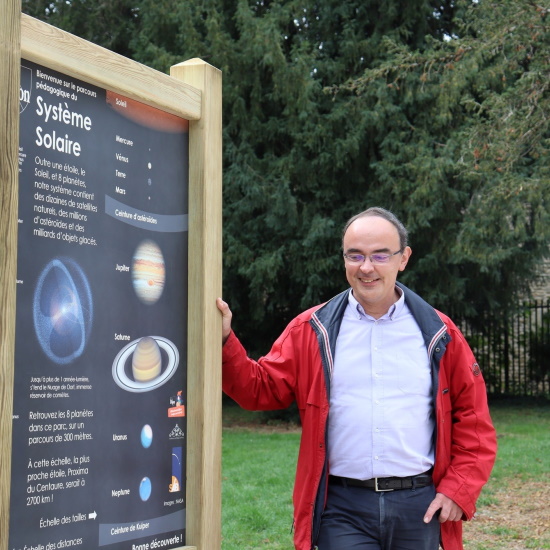
Professor Vincent Boudon, CNRS and Université de Bourgogne, France

Professor Vincent Boudon, CNRS and Université de Bourgogne, FranceVincent Boudon is CNRS senior researcher in Dijon, France. He works on the modelling of absorption, emission and scattering spectra of molecules of atmospheric and astrophysical interest like methane, various greenhouse gases and species present in the atmospheres of Titan, giant planets and exoplanets. He uses specific mathematical models and programs developed for molecules with a high symmetry. He contributes to the development of public spectroscopic databases. He is also involved in popular science and is head of the local section of the French Physical Society and of an astronomical society in Burgundy. |
| 11:30-11:45 |
Discussion
|
| 11:45-12:15 |
Disentangling planet and stellar signatures at high spectral resolution
Almost everything we know about exoplanets comes from light originating from their far more luminous host stars. As a consequence, signatures from stellar surface inhomogeneities can imprint themselves on exoplanet observations; this is especially prevalent at high spectral resolution where even subtle signatures can be decomposed. For Sun-like stars, such inhomogeneities are primarily driven by heat transport via convection at the surface interplaying with magnetic fields, giving rise to various phenomena from granulation and oscillations to faclue/plage, spots, and flares etc. In this talk, Dr Cegla will show how these phenomena alter the shape and position of the stellar absorption lines that we use to probe exoplanet characteristics. The impact is far-reaching, from exoplanet mass determination to our analysis of star-planet dynamical histories to teasing out the chemical makeup of exoplanet atmospheres. She will also discuss ongoing efforts to use high spectral resolution to unveil stellar variability fingerprints and disentangle underlying exoplanet signatures. 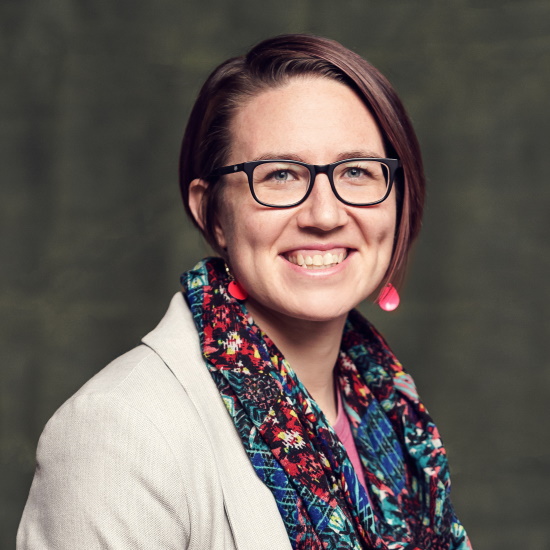
Dr Heather Cegla, University of Warwick, UK

Dr Heather Cegla, University of Warwick, UKDr Cegla is originally from the US and obtained her BS in Physics, with an Emphasis in Astronomy and Minor in Mathematics, from Minnesota State University Moorhead in 2010. In 2014, they were awarded their PhD in Astrophysics from Queen’s University Belfast, where she stayed on as a postdoctoral research assistant until 2016. From there, she took up a CHEOPS Fellowship hosted at the University of Geneva until 2020. Dr Cegla is currently a UKRI Future Leader Fellow and Assistant Professor at the University of Warwick. Dr Cegla's research focuses on enabling the future confirmation of Earth-analogues and improving our understanding planetary migration and evolution by disentangling stellar and planetary signatures. In particular, they are studying magnetoconvection from a two-pronged perspective: 1) using transiting planets to resolve stellar surfaces and determine the dynamical histories of star-planet systems and 2) simulating stellar surfaces with state-of-the-art 3D simulations to gain insight into the underlying physics. |
| 12:15-12:30 |
Discussion
|
Chair
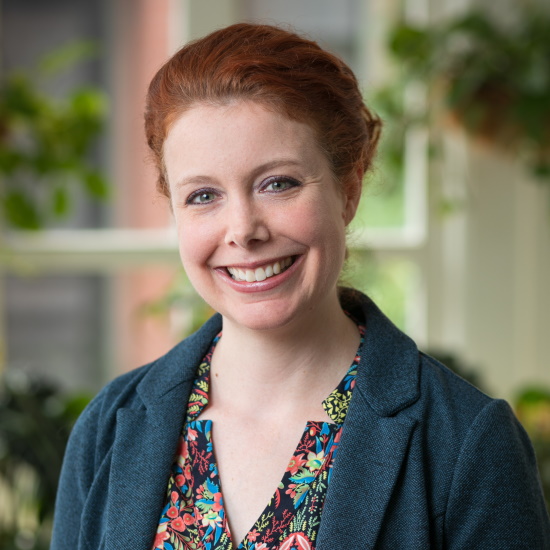
Professor Nikole Lewis, Cornell University, USA

Professor Nikole Lewis, Cornell University, USA
Dr Nikole Lewis is an Associate Professor of Astronomy at Cornell University. Dr Lewis is involved with dozens of observational campaigns with the former Spitzer and current Hubble and JWST Space Telescopes, as well as ground-based facilities, that aim to determine the nature of exoplanet atmospheres. She also develops a broad range of atmospheric models that are necessary for interpretation of current exoplanet observations and planning exoplanet observation with future facilities. Before joining the faculty at Cornell, she served as the JWST project scientist at the Space Telescope Science Institute and was a Sagan Postdoctoral Fellow at the Massachusetts Institute of Technology.
| 13:30-14:00 |
Dynamics of exoplanet atmospheres revealed with near infrared spectroscopy
Investigating the spectral signatures of exoplanets allows us to constrain their physical and chemical properties and shed light on their formation histories. Particularly, studies at high-resolution offer opportunities to probe the atmospheres of cloudy exoplanets whose features remain obscured at lower resolution. Moreover, dynamics within the atmospheres can be investigated by resolving the Doppler shifts and line profiles of the absorbing and emitting material. Measuring these features independently for each atmospheric species and at different phases of the orbit can reveal the planets' 3D structures in the form of wind patterns, hot spots, and day-to-night side contrasts. The signatures of highly volatile species such as hydrogen and helium, further, can yield insights into atmospheric escape and the interaction of the escaping material with the stellar wind. In this talk Dr Nortmann delves into some of the dynamic processes occurring in exoplanet atmospheres that can be studied though near infrared observations with state-of-the art spectrographs. 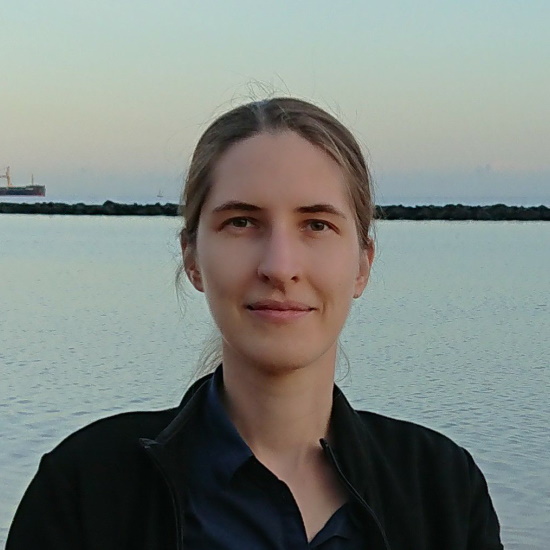
Dr Lisa Nortmann, Georg-August-Universität Göttingen, Germany

Dr Lisa Nortmann, Georg-August-Universität Göttingen, GermanyDr Lisa Nortmann is working on the study of exoplanet atmospheres at high-resolution. She is coordinating the Work Packages for Exoplanet Atmosphere studies for the CARMENES and CRIRES+ consortia. Dr Nortmann obtained her PhD at the University of Göttingen working on low resolution observations of highly irradiated exoplanet atmospheres at optical wavelengths. She then moved on to the Institute for Astrophysics in the Canaries where she shifted her research focus to high-resolution spectroscopy and the dynamics of exoplanet atmospheres that can be probed when resolving individual spectral lines. There she started her studies of the near infrared He I triplet lines, which can be used to probe atmospheric escape. In 2020 she moved back to the Institute of Astrophysics and Geophysics in Göttingen, where she expanded her personal research to molecular signatures in the near infrared. |
|---|---|
| 14:00-14:15 |
Discussion
|
| 14:15-14:45 |
On the magnetic response of chromium hydride near 860 nm, and consequences for telescope polarimetic studies
Dr Ross will describe laser-induced fluorescence experiments performed to investigate the magnetic response of some first-row transition metal monohydrides observed in the spectra of cool stars, and in particular the pathological A 6Σ+ -X 6Σ+ system of CrH. The spectra, and the subsequent fitting and modelling, illustrate the consequences that even modest magnetic fields may have on spectral features. The MH radicals are produced at around 450 K, sputtering metal from a cathode of chromium-iron alloy with a flow of 10% H2 in argon. These temperatures are far below the 3000 K associated with cool stars, but have the advantage of giving at least partially-resolved spectra even in Doppler-limited conditions. The group has recorded laser excitation spectra using linear or circularly polarized light, in static magnetic fields up to 0.5 Tesla, and compare their observations with standard Hamiltonian model taken from C Western's Pgopher program, and with spectra recorded at the Canada France Hawaii telescope on the visible (ESPaDoNs) and infrared (SPIRou) spectropolarimeters, considering a small selection of cool (dwarf) stars exhibiting known degrees of magnetism. The talk will illustrate what can – and what cannot – be extracted from molecular data in this context, and describe some of the challenges faced when trying to incorporate effective Landé factors in spectral simulations for stellar objects. 
Dr Amanda Ross, University of Lyon, France

Dr Amanda Ross, University of Lyon, FranceDr Amanda Ross is a Senior Research Scientist with CNRS France, based at the Villeurbanne campus of Université de Lyon. Following a BA degree in Chemistry at Oxford, she moved to France as a PhD student, where molecular spectroscopy was considered to be Physics. She joined the permanent staff of the Laboratoire de Spectroscopie Ionique et Moléculaire (later Institut Lumière Matière) in Lyon in 1990, to work with their newly-acquired Fourier transform interferometer, and has since used combinations of laser excitation, fluorescence and FT techniques to characterise the electronic structure of valence states of small gas-phase molecules and radicals. |
| 14:45-15:00 |
Discussion
|
| 15:00-15:30 |
Break
|
| 15:30-16:00 |
Synergy space and ground: an asset for exoplanet spectroscopy
Thousands of planets orbiting stars other than our own are being discovered. Since their discovery in the 1990s this field of astronomy and planetary science has exploded, being today one of the most exciting and dynamic. Even within the limits of our current observational capabilities, studies of extrasolar planets have provided a unique contribution to improving our view of the place that the Solar System and the Earth occupy in the galactic context. The arrival of more performing and dedicated facilities from space and the ground in the coming decade, will provide an unprecedented opportunity to study these worlds. In this talk, Professor Tinetti will focus on the complementarity of space and ground, and review highlights and pitfalls of currently available techniques to sound exoplanet atmospheres. Most importantly, they will highlight the need to use said facilities and techniques synergistically to advance in this field of research in the coming decade and beyond. Dr Giovanna Tinetti, University College London, UK
Dr Giovanna Tinetti, University College London, UKBiographyDr Giovanna Tinetti is a Royal Society URF and Reader at the University College London, where she leads a team on exoplanets since 2007. Dr Tinetti received her PhD in theoretical physics from the University of Turin (Italy) in 2003 and then moved to Caltech in the US and Paris in France to work on exoplanetary atmospheres supported by NASA and ESA fellowships. She received the 2011 Institute of Physics Moseley Medal for her pioneering work on the use of infrared, primary transit spectroscopy to characterise the molecular composition of extra solar planets. Dr Tinetti has led the successful proposal for the mission candidate EChO (Exoplanet Characterisation Observatory), a space telescope dedicated to the study of exoplanetary atmospheres, currently under study by the European Space Agency. She is an editor for Icarus, the planetary journal of the American Astronomical Society. She has authored more than eighty refereed publications.
|
| 16:00-16:15 |
Discussion
|
| 16:15-17:00 |
Poster flash talks
|
| 17:00-18:15 |
Poster session
|
Chair
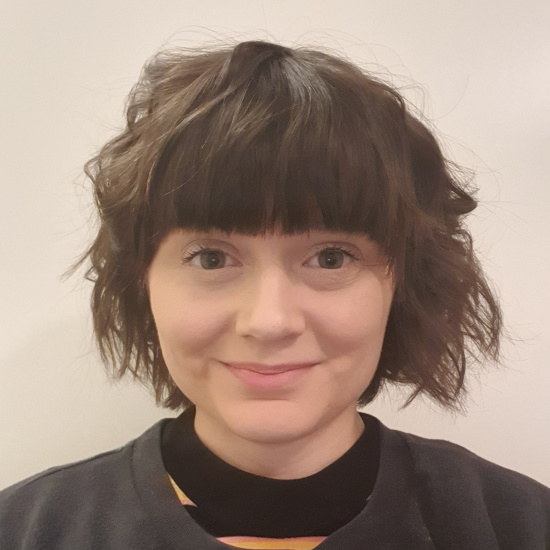
Dr Katy Chubb, University of St Andrews, UK

Dr Katy Chubb, University of St Andrews, UK
Dr Chubb is a postdoc at the University of St Andrews working on characterising exoplanet atmospheres, with a background in theoretical molecular spectroscopy. After a few years out in industry as a programmer, they undertook their PhD at UCL, where they computed a line list complete up to high temperatures for acetylene under the supervision of Sergey Yurchenko and Jonathan Tennyson. They have since worked as a postdoc at SRON Netherlands Institute for Space Research on retrievals of exoplanet atmospheres in preparation for JWST with Michiel Min. They computed many opacities for a large variety of molecular species in various formats required for four different retrieval codes (the ExoMolOP database), and re-analysed archive HST data to search for evidence of molecular signatures. Dr Chubb worked on moving towards a 3D model of retrieving atmospheric properties from observations using radiative transfer. They are now a postdoc at the University of St Andrews, working with Christiane Helling and Daphne Stam (TU Delft) on modelling linearly polarised reflection spectra from transiting hot exoplanets in order to place constraints on the types of clouds and molecules in the planetary atmospheres. They have been involved in a number of initiatives, including the Mayors fund for London Astronomy Club, ORBYTS (Original Research for Young Twinkle Students), and JURA (The JUnior Research Award). The latter two have involved teaching students to undertake real research in making theoretical line lists suitable for high resolution studies.
| 09:00-09:30 |
MAESTRO: building access and community standards for opacity data at the onset of next-generation exoplanet atmosphere observations
The characterisation of a diverse set of exoplanet atmosphere observations, ranging from hot gas giants to small temperate rocky worlds, will be one of the legacies of exoplanet science in the coming decade. Our understanding and interpretation of such observations will hinge on our ability to link observations with atmospheric theoretical studies that critically rely on fundamental molecular and atomic opacities. Computing such opacities is a highly inaccessible process which requires several terabytes of available disk space, hours of CPU time per pressure-temperature combination, and requires users to carefully aggregate line lists data from various sources. Ultimately, this limits access to data and model intercomparison studies within the exoplanet community. To interpret next generation exoplanet observations successfully and robustly, the community needs access to validated and up-to-date opacities. This was the motivation for the MAESTRO (Molecules and Atoms in Exoplanet Science: Tools and Resources for Opacities) database, a new NASA-supported opacity service that can be accessed by the community via a web interface. Professor Lewis will present MAESTRO and discuss the outcome of a multi-year collaboration to develop community standards in computing opacities. This is timely because subtle choices in opacities lead to model inconsistencies in the analysis of both high-resolution (R>10,000) and low resolution (JWST-like) observations. The MAESTRO team reflects a diversity in expertise: the maintainers of ExoMol, HITRAN/HITEMP, and various exoplanet and stellar atmosphere models. With its recent release, MAESTRO will prove to be an invaluable community resource in the era of JWST and beyond. 
Professor Nikole Lewis, Cornell University, USA

Professor Nikole Lewis, Cornell University, USADr Nikole Lewis is an Associate Professor of Astronomy at Cornell University. Dr Lewis is involved with dozens of observational campaigns with the former Spitzer and current Hubble and JWST Space Telescopes, as well as ground-based facilities, that aim to determine the nature of exoplanet atmospheres. She also develops a broad range of atmospheric models that are necessary for interpretation of current exoplanet observations and planning exoplanet observation with future facilities. Before joining the faculty at Cornell, she served as the JWST project scientist at the Space Telescope Science Institute and was a Sagan Postdoctoral Fellow at the Massachusetts Institute of Technology. |
|---|---|
| 09:30-09:45 |
Discussion
|
| 09:45-10:15 |
Modelling exoplanet atmospheres at high resolution
In recent years ground-based high-resolution spectroscopy has revolutionised how we detect and constrain constituent chemical species in the atmospheres of exoplanets. In the last five years alone a range of new spectrographs have come online, capable of higher sensitivity and spectral coverage. These facilities allow for very high spectral resolution observations (R>20,000) to detect many thousands of individual line features from spectrally active species in the atmosphere. A wide array of molecular, atomic and ionic species have been clearly observed in numerous transiting exoplanets, ranging from the optical to infrared, most notably for ultra-hot Jupiters with temperatures in excess of 2000K. From recent work on retrievals we have also been able to determine chemical abundances and explore a wide range of parameter space through robust statistical frameworks. These frameworks are essential for accurate characterisation, determining formation and migration of exoplanets as well as contextualising our own Solar System. In addition, with the spectral power and sensitivity of high-resolution spectroscopy we have been able to explore atmospheric dynamics in exoplanets for the first time. This due to atmospheric winds which result in Doppler shifts and broadening of signals of exoplanetary spectra. Dr Gandhi will discuss the latest developments in theoretical modelling of exoplanets at high resolution as well as the constraints and trends that we observe in the chemistry and dynamics from observations. They will also discuss the next generation of large ground-based facilities, which will enable us to explore the atmospheres of much cooler, rocky planets for the first time when they come online at the end of the decade. 
Dr Siddharth Gandhi, Leiden University, The Netherlands

Dr Siddharth Gandhi, Leiden University, The NetherlandsDr Gandhi is an Oort fellow at Leiden University working on the characterisation of exoplanetary atmospheres. They were previously a research fellow in the Astronomy and Astrophysics group at the University of Warwick working with Dr Matteo Brogi. They completed their PhD in 2019 advised by Dr Nikku Madhusudhan at the Institute of Astronomy at the University of Cambridge on various aspects of atmospheric modelling. Their overall research goal has been to understand the diversity of physical and chemical properties of exoplanet atmospheres. Dr Gandhi's work has encompassed a wide range of theoretical developments, from self-consistent models to atmospheric retrievals across a wide range of observations from space based low resolution to ground based high resolution spectroscopy. This has spanned a variety of planet types from cool low mass super-Earths to hot Jupiters, with the eventual goal of studying rocky Earth-like planets in the habitable zone which have the potential for biosignatures. |
| 10:15-10:30 |
Discussion
|
| 10:30-11:00 |
Break
|
| 11:00-11:30 |
HITRAN and HITEMP data for high resolution exoplanet spectroscopy
Studies of exoplanets have accelerated in recent years thanks to improved observation and analysis techniques. Exoplanet atmospheres have been shown to be diverse, not just in temperature, but also composition, and the latest analyses from JWST spectra are already revealing tantalising discoveries. Characterising these atmospheres is dependent on the unique molecular signatures that are present in their spectra. Therefore it is vital that the spectroscopic parameters used for interpreting atmospheric models are accurate and appropriate for these new worlds. The HITRAN and HITEMP databases provide line-by-line parameters for 55 molecules, experimental cross-sections for over 300 molecules for which no reliable quantum mechanical models exist, as well as collisional induced absorption data. This presentation will highlight the state-of-the-art data available in HITRAN and HITEMP with a particular focus on recent line list improvements and the addition of line-broadening parameters for planetary atmospheres (such as those dominated by H2/He, or CO2). This presentation will also contemplate the limitations of current spectroscopic data for the interpretation of planetary spectra. 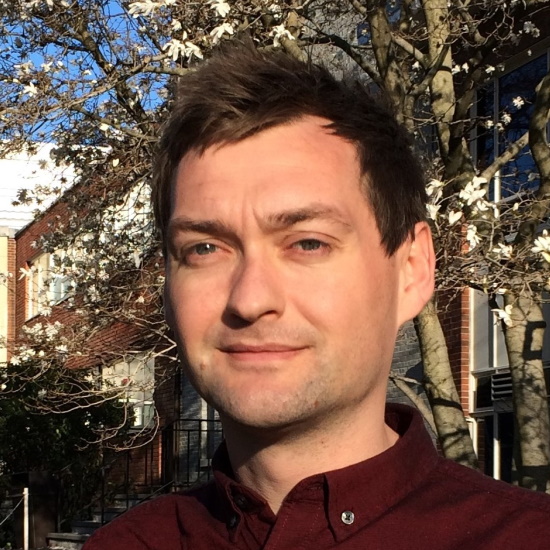
Dr Robert Hargreaves, Center for Astrophysics, Harvard & Smithsonian, USA

Dr Robert Hargreaves, Center for Astrophysics, Harvard & Smithsonian, USADr Hargreaves is currently a physicist at the Center for Astrophysics, Harvard & Smithsonian in Cambridge (USA) working to update and expand the HITRAN and HITEMP molecular databases. They have worked at the CfA since 2018 and they primarily focus on the identification, procurement, and validation of experimental and theoretical molecular data. Their undergraduate studies were carried out at the University of York (UK) where they also later obtained their PhD in physical chemistry in 2013. During Dr Hargreaves' postdoc career they have worked on the retrieval of trace gases from satellite observations of the terrestrial atmosphere (University of Oxford, UK), and also recorded and analysed experimental spectra of molecular gases at temperatures applicable to brown dwarf and exoplanet atmospheres (Old Dominion University, USA). In 2018, they were awarded the James Brault Award for Molecular Spectroscopy from the Journal of Quantitative Spectroscopy and Radiative Transfer. |
| 11:30-11:45 |
Discussion
|
| 11:45-12:15 |
Use of the ExoMol database of high accuracy spectroscopy of exoplanets
The use of high resolution spectroscopy using cross correlation techniques to study the spectra of molecules in the atmospheres of exoplanets places significant demands on the accuracy of the laboratory data used to analyse these spectra. The ExoMol project provides molecular line lists for exoplanetary and other atmospheres which are computed using first principles quantum mechanical methods informed by available experimental data. The original ExoMol line lists focused heavily on providing completeness at higher temperatures allowing opacities to be generated and the construction of appropriate spectral models for analysing transit spectra. The much higher resolution needed for cross correlation spectroscopy means that these line lists need to be refactored. To do this we use available laboratory measurements which are used to provide high accuracy energy levels which in turn are used generate key portions of the molecular spectrum with required accuracy. The talk will describe the MARVEL (measured active rotation vibration energy levels) procedure used for this process and the development of appropriate high accuracy models for challenging molecules such as VO, as well as how this method can be used to provide accurate spectra of isotopically substituted molecules. Professor Jonathan Tennyson FRS, University College London, UK
Professor Jonathan Tennyson FRS, University College London, UKJonathan Tennyson gained a BA in Natural Sciences from King's College, Cambridge in 1977 and a PhD in Theoretical Chemistry from the University of Sussex in 1980. He spent a productive two years as Royal Society Western European Exchange Fellow at the University of Nijmegen in the Netherlands, In 1982 he joined the Theory Group at Daresbury Laboratory. He was appointed a “New Blood” lecturer at University College London in Theoretical Atomic Physics in 1985. He became Professor of Physics in 1994; was Head of Department in 2004-11 and became Massey Professor of Physics in 2005. He was elected an FRS in 2009. His research interests cover a range of topics on the theory of small molecules. In particular I compute spectra of these molecules (such as water) and collide electrons (and occasionally positrons) with them. He is interested in the astrophysical, atmospheric and other consequences of these processes. He recently started a new project, ExoMol (www.exomol.com), aimed at calculating comprehensive line lists for models exoplanets and other hot atmosphere.
|
| 12:15-12:30 |
Discussion
|
Chair

Professor Jayne Birkby, University of Oxford, UK

Professor Jayne Birkby, University of Oxford, UK
Jayne Birkby is an Associate Professor of Exoplanetary Science at the University of Oxford and a Fellow of Brasenose College. She received her PhD in Astrophysics from the University of Cambridge, and has previously held a postdoctoral scholarship at Leiden University, a NASA Sagan Fellowship at Harvard University and an Assistant Professorship at University of Amsterdam. She is an ERC Starting Grant Laureate, where she is PI of the project 'exoZoo: High definition and time-resolved studies of exoplanet atmospheres'. Her goals are to understand the incredible diversity of the exoplanet population, and to survey the very nearest terrestrial exoplanets with the upcoming Extremely Large Telescopes (ELTs). Professor Birkby and her group specialise in using, and helping to design, the highest resolution instruments for the largest telescopes, and have a keen interest in connecting exoplanets to chemistry, geology, and biology in the pursuit of the answer to: are we alone?
| 13:30-14:00 |
Using a variety of molecules in exoplanet atmosphere studies
Exoplanet atmospheres are thought to host a rich variety of molecular species, and so having appropriate line list data (molecular energy levels and transitions) and opacities (as a function of pressure and temperature) is important for proper atmospheric characterisation. The requirements for molecular data differ depending on whether they are to be used for low- or high-resolution studies. Dr Chubb will talk about methods which use laboratory data to bring theoretically computed line lists towards spectroscopic accuracy, in order that they can be used in high-resolution cross-correlation studies. They have led such projects as part of the ORBYTS (Original Research For Young Twinkle Students) initiative, where groups of 16–18 year olds are involved in conducting and publishing real research. The ExoMolOP database, on the other hand, is primarily for retrieval codes which make use of low-resolution spectra, requiring the line lists to be complete up to high-temperatures (typically 1000-2000K). Dr Chubb will talk a bit about these data and how they have been used to search for molecules in exoplanet atmospheres. They will also talk a little on how high-resolution molecular data can be used in the modelling of polarised reflection spectra to determine cloud properties in exoplanet atmospheres. 
Dr Katy Chubb, University of St Andrews, UK

Dr Katy Chubb, University of St Andrews, UKDr Chubb is a postdoc at the University of St Andrews working on characterising exoplanet atmospheres, with a background in theoretical molecular spectroscopy. After a few years out in industry as a programmer, they undertook their PhD at UCL, where they computed a line list complete up to high temperatures for acetylene under the supervision of Sergey Yurchenko and Jonathan Tennyson. They have since worked as a postdoc at SRON Netherlands Institute for Space Research on retrievals of exoplanet atmospheres in preparation for JWST with Michiel Min. They computed many opacities for a large variety of molecular species in various formats required for four different retrieval codes (the ExoMolOP database), and re-analysed archive HST data to search for evidence of molecular signatures. Dr Chubb worked on moving towards a 3D model of retrieving atmospheric properties from observations using radiative transfer. They are now a postdoc at the University of St Andrews, working with Christiane Helling and Daphne Stam (TU Delft) on modelling linearly polarised reflection spectra from transiting hot exoplanets in order to place constraints on the types of clouds and molecules in the planetary atmospheres. They have been involved in a number of initiatives, including the Mayors fund for London Astronomy Club, ORBYTS (Original Research for Young Twinkle Students), and JURA (The JUnior Research Award). The latter two have involved teaching students to undertake real research in making theoretical line lists suitable for high resolution studies. |
|---|---|
| 14:00-14:15 |
Discussion
|
| 14:15-14:45 |
Metals and more: high-resolution spectroscopy of ultra-hot Jupiters
Ultra-hot Jupiters tend to orbit hot early type stars in short periods and are heated to extreme temperatures far over 2,000 K on their day-sides. All but the most strongly bound molecules are dissociated and many atoms may be significantly thermally ionised. The dominant sources of line opacity are due to metals and some molecules including metal oxides. Much of these absorb efficiently at short wavelengths, causing strong thermal inversions. These inversions affect the atmospheric structure, chemistry, as well as global circulation of gas and heat. Excitingly, these thermal inversions can be observed very effectively using high-resolution spectroscopy of the day-side, where a multitude of metals exhibit line emission. Together with transmission spectroscopy that senses the day-to-night terminator, we can use these observations to constrain the chemical and thermal structure of the atmosphere in three dimensions. The group has analysed observations of a collection of ultra-hot Jupiters, and find tantalising commonalities and differences between them. 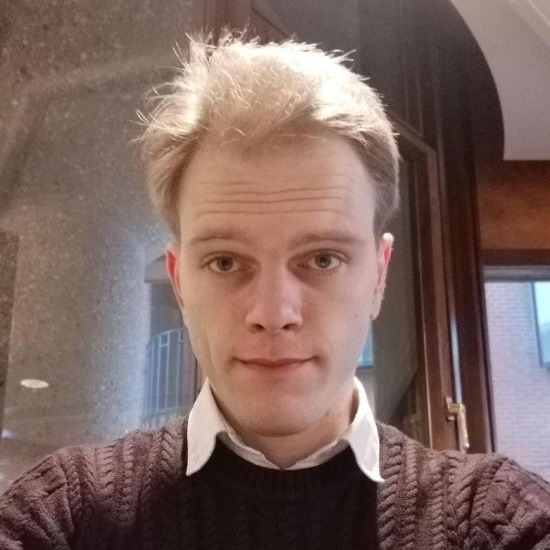
Dr Jens Hoeijmakers, Lund Observatory, Sweden

Dr Jens Hoeijmakers, Lund Observatory, SwedenJens Hoeijmakers is a Senior Associate Lecturer at Lund Observatory, and is an expert on the application of high-resolution cross-correlation spectroscopy of ultra-hot Jupiter transmission and emission spectra. He completed his PhD in Leiden University under the supervision of Ignas Snellen in 2017, and did two post-doc assignments in Switzerland at the Universities of Geneva and Bern. He leads the Mantis network that brings together observers and theorists to improve the strategies with which we analyse high-resolution observations. Besides ultra-hot Jupiters, he has worked on various implementations of exoplanet spectroscopy, including reflected light, integral-field spectroscopy of directly imaged planets and space instrumentation. |
| 14:45-15:00 |
Discussion
|
| 15:00-15:30 |
Break
|
| 15:30-16:00 |
Recent theoretical approaches to high-resolution pressure-broadening parameters for remote sensing of exoplanetary atmospheres
Spectroscopic studies of exoplanetary atmospheres by the next-generation space missions, such as the James Webb Space Telescope (JWST) and Atmospheric Remote-sensing Exoplanet Large-survey (ARIEL), will rely on spectroscopic data available at mid-infrared and visible/infrared wavelengths for the bulk of already detected or expected molecules. Due to the specific conditions of hot atmospheres and chemical reactions which lead to the formation of spectroscopically active species ('exotic' molecules and molecular ions), laboratory studies are extremely scarce in both infrared/microwave and visible/ultraviolet regions. Therefore, there is a huge demand for robust theoretical approaches and estimates that could provide line-shape parameters for wide ranges of temperatures and pressures and large variety of perturbers. For the UV region, where the lack of the line shape data is especially critical, theoretical modelling, motivated by the known effect of the strongly dominating adiabatic collisions, is introduced based on the Fourier-integral/phase-shift theory and ab initio interaction potentials. For the IR/MW region, where many classical, quantum-mechanical, and semi-classical theoretical approaches to collisional line-broadening and shifting are available but require pre-computed reliable potential-energy surfaces and CPU-costly calculations for each collisional pair, Professor Buldyreva suggests a simple theoretical expression requiring a minimal set of input parameters (kinetic molecular properties and the character of the leading term in the intermolecular interaction potential). Examples for active molecules from the ExoMol database are given. |
| 16:00-16:15 |
Discussion
|
| 16:15-17:00 |
Panel session
|

